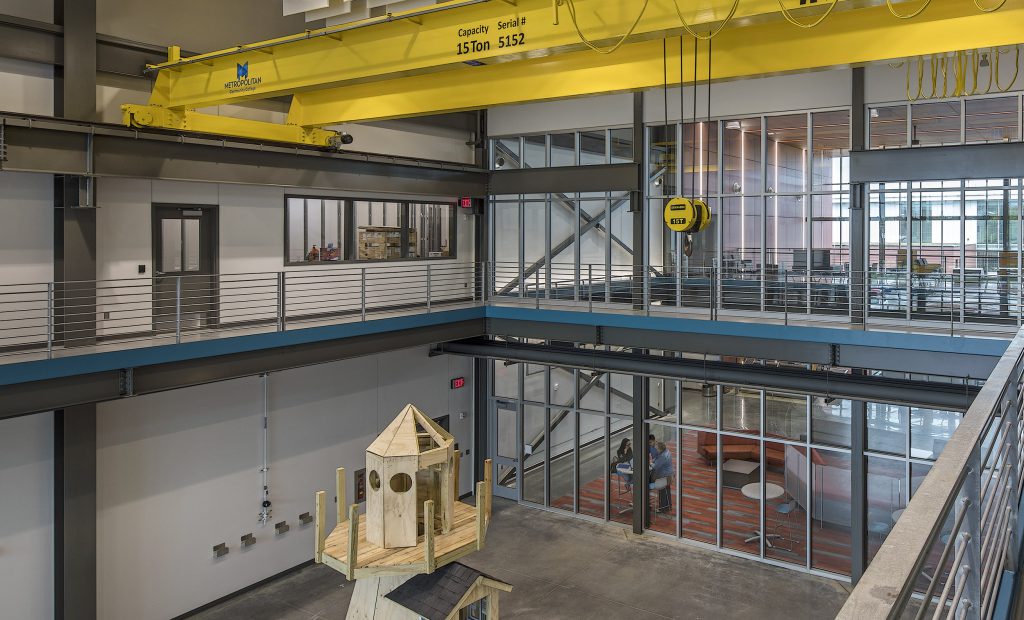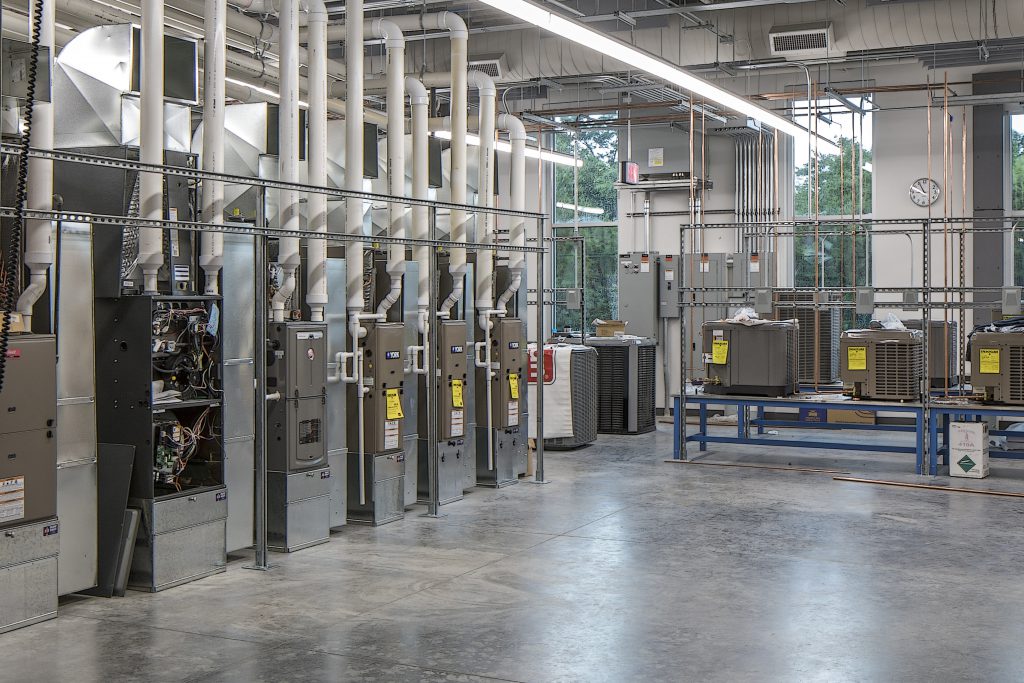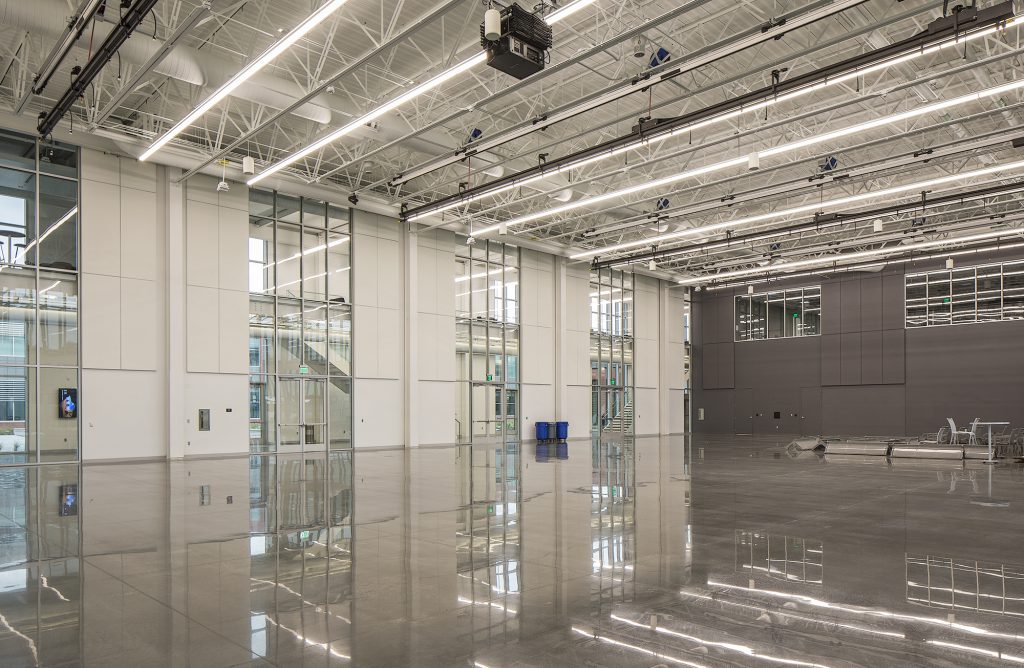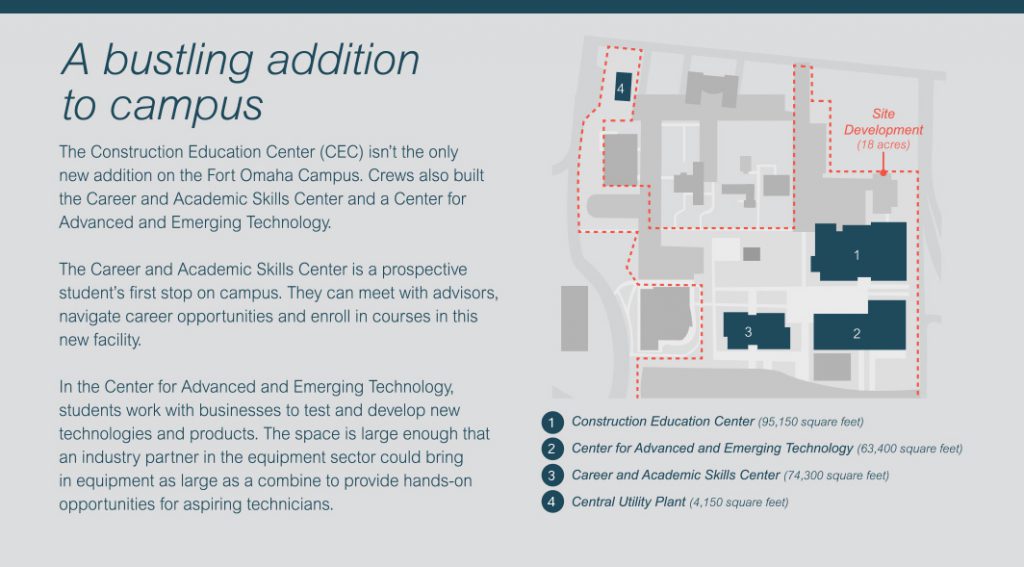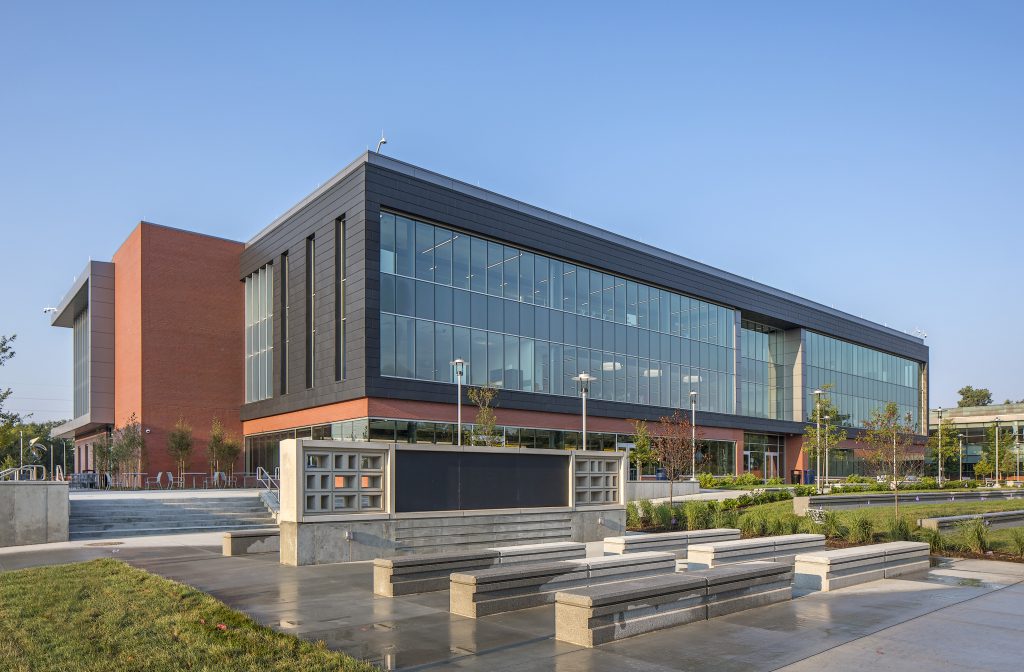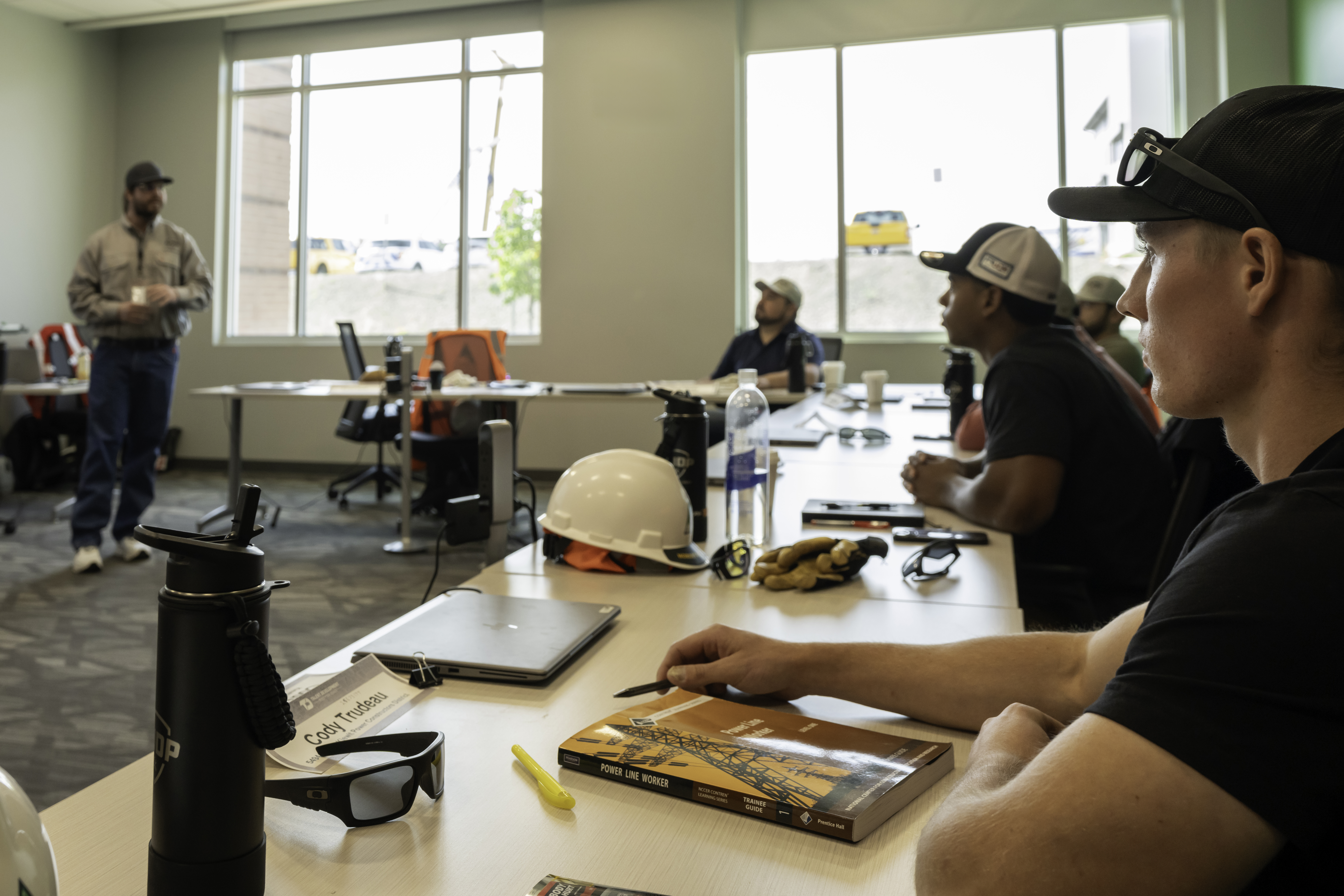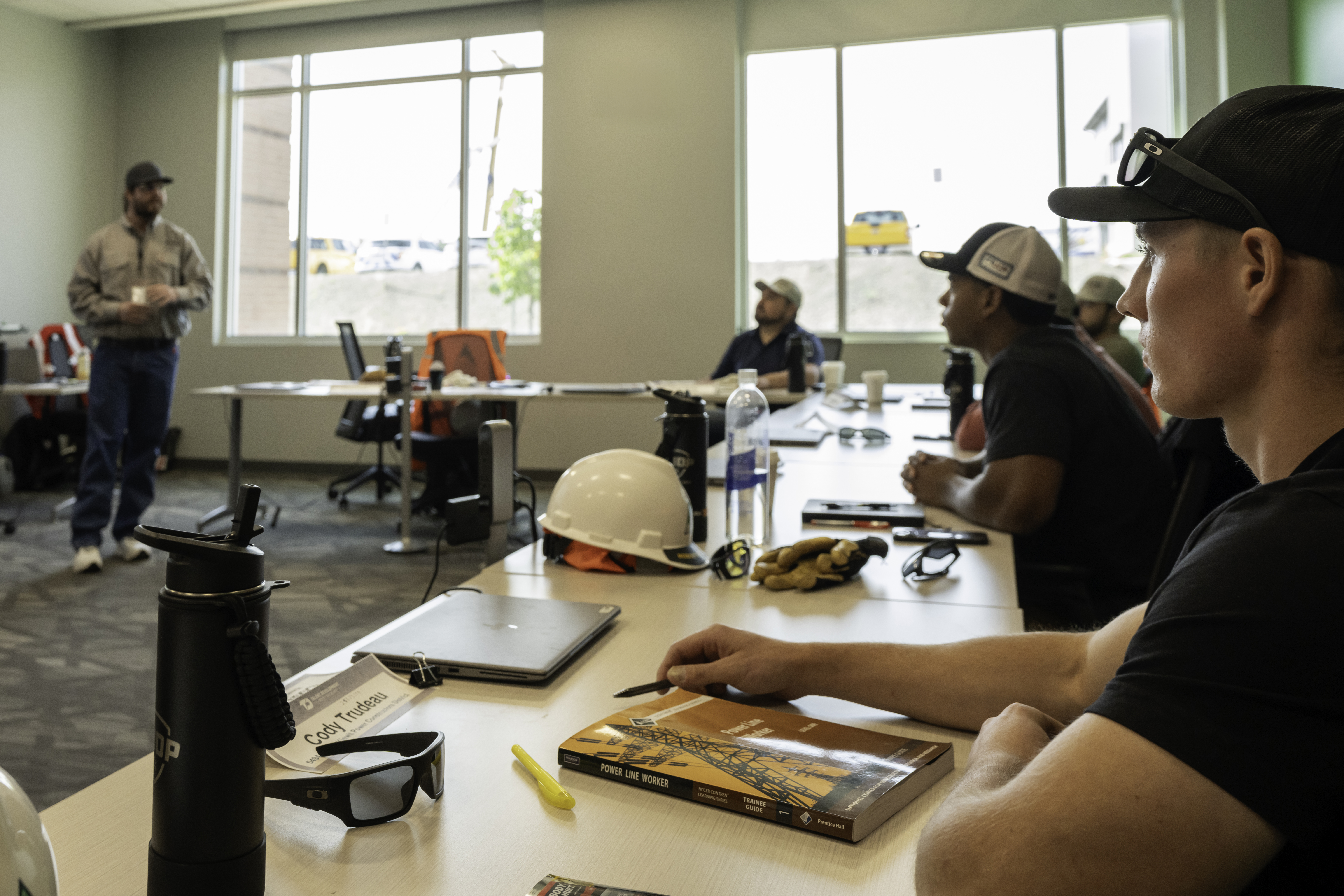MCC’s Fort Omaha Campus
According to the Associated General Contractors of America’s (AGC) 2016 workforce survey, nearly 70 percent of construction firms in the U.S. are having trouble finding craft workers.
As a project manager with Kiewit, Kyle Marler faces this reality every day.
“Everyone in our industry would tell you it’s one of our biggest challenges,” Marler said.
Projections from the Bureau of Labor Statistics show the demand for skilled workers increasing. Employment of construction laborers is expected to grow 13 percent from 2014 to 2024 — faster than the average for all occupations.
These numbers make a contractor’s job more challenging, but it’s also one of the trends that drove the expansion of Metropolitan Community College’s (MCC) Fort Omaha Campus, Marler’s most recent assignment with Kiewit.
When MCC leaders planned for the Fort Omaha Campus, they did so with the needs of several industries in mind, including construction.
“We got a lot of input from industry that helped us understand the workforce,” said Stan Horrell, MCC’s director of campus planning and sustainability.
MCC evaluated trends in technology and workforce demographics, among other variables, to reach their final project plan. The resulting $90 million development features the Career and Academic Skills Center, a Center for Advanced and Emerging Technology and the Construction Education Center (CEC).
The CEC is a 95,000-square-foot facility equipped to prepare students for lifelong careers in construction. It centralizes MCC’s construction trades programs, which had been scattered across several locations, and is designed to encourage interaction between all of the construction disciplines.
In the capstone lab, students will participate in the assembly of modular buildings. A 15-ton gantry crane will assist in loading the completed modules.
Residential heating and air is one of the disciplines that will be taught in the new facility. Other disciplines include commercial heating and air, plumbing, electrical, general construction, welding, drafting, layout and construction management.
“One of the major questions we asked ourselves was, ‘In five years, why would anybody come to a location for education?’” Horrell said. “We decided that you can share a lot of things online, but you can’t really do hands-on work and you can’t share the coordination between the various disciplines if they’re not co-located.”
You need look no further than construction of the Fort Omaha Campus project itself to recognize that MCC’s focus on coordination and collaboration was founded in how things play out in the real world.
“With three new buildings, site work and a central plant on the 18-acre site, we essentially had five standalone projects under one contract,” Kiewit Project Engineer Anayeli Martinez Real said.
Frequent meetings with MCC, designers and subcontractors kept construction on track. Kiewit’s staff team was organized so that each new building and the site work had its own superintendent and office engineer managing that scope and coordinating with the trades, subcontractors and designers assigned to it. Those individuals were further supported by project management overseeing the job’s collective big picture.
Collaboration extended into the community. MCC and Kiewit made it a point to get Omahans involved in the project. It started early with Industry Days, a program that connected local subcontractors and small businesses with the Kiewit team, providing business owners with the information they’d need to bid on the job. Two of these events were held prior to the start of construction, in addition to a third presentation with similar information that was presented in Spanish.
MCC and Kiewit took that information to the classroom too. Small businesses could enroll in a 10-week, MCC noncredit course called Contractor & Small Business Academy to learn business and contracting essentials. It started with five weeks of business fundamentals taught by MCC faculty, followed by five weeks of contracting fundamentals taught by Kiewit. Seven of the 10-week sessions were taught during construction.
“Many of the participants were just starting to consider going from what might be a side job hanging drywall or building decks, to taking the next step to make it a full-time business,” said Marler. “We focused on what it takes to be successful in commercial construction, from the business side to complying with safety regulations. Some of the more experienced participants were able to bid work on our project.”
Kiewit and MCC also got the community’s youth engaged in the project. During construction, high school classes, SkillsUSA and nonprofit groups visited the jobsite.
Touring in the same personal protective equipment required by crews on the job, these young men and women were able to get an up-close look at the many different careers in construction, all working together on one project.
“When we talked to these high school students still determining their paths, this project offered a unique vantage point,” Kiewit Engineer Michael Zenker said. “We could talk to them about going to the trades, going to MCC for classes, going to MCC and then to a four-year university, or going directly to a four-year university. Each of those paths will land you in a different role on a job like this.”
In the new Construction Education Center (CEC) even the building is a teaching tool. Plumbing, utilities, electrical and mechanical systems are all visible through interior glass and lighting.
In the Center for Advanced and Emerging Technology (CAET), Innovation Central is a large exhibition space with an aircraft hangar style overhead door.
The hope is that this chance to be on site inspired students to consider a future in the industry.
Bob Campos, Kiewit’s general superintendent at the Fort Omaha Campus, has been in construction for close to 40 years, 10 of them with Kiewit.
“I started in the field working for my dad’s company,” Campos said. “There’s a huge need for people and it’s a career that, dollar-wise, allows you to provide for yourself and your family.”
Data from the Bureau of Labor Statistics helps illustrate that point. In May 2016, the median wage for all construction and extraction occupations was more than $43,500. That’s higher than the average for all other occupations, which was just over $37,000.
And it’s not just about monetary rewards. Horrell started his career in construction and pointed to the sense of accomplishment as an added benefit of working in the industry.
“More than anything else, I think it’s the fact that you can actually see and visualize the work you complete every day become part of a larger project,” Horrell said when asked why he would encourage others to consider a career in construction. “I think that feeds a pretty basic human desire to work toward and accomplish a goal. There are daily rewards, and in some jobs in life that’s pretty hard to see.”
Now that the Fort Omaha Campus project is complete, Horrell hopes to see it become a premier destination for people looking to pursue these types of careers.
“When community and industry come back to us as the primary educational resource for trades people and technicians, and when we are all completely engaged, we’ll know it’s successful.”
